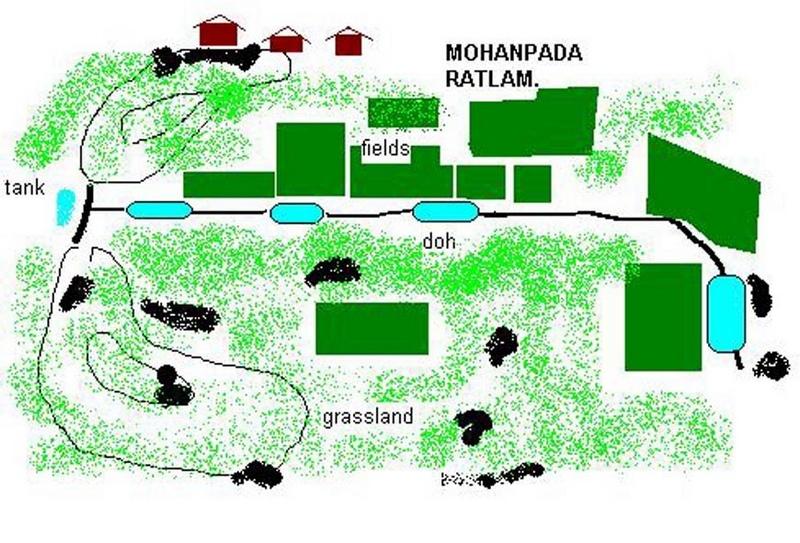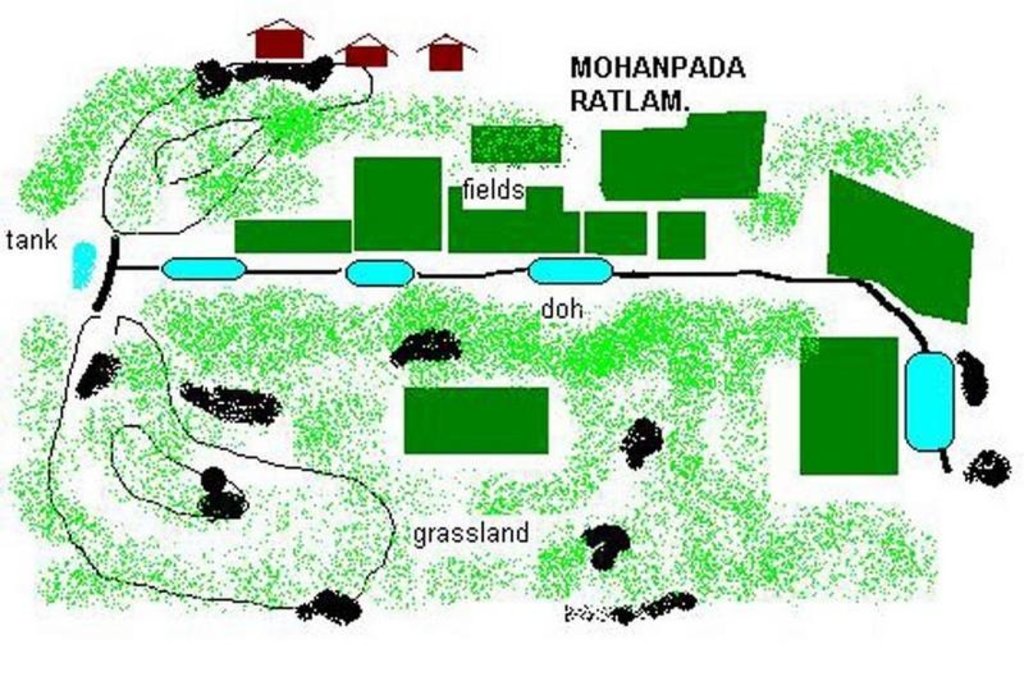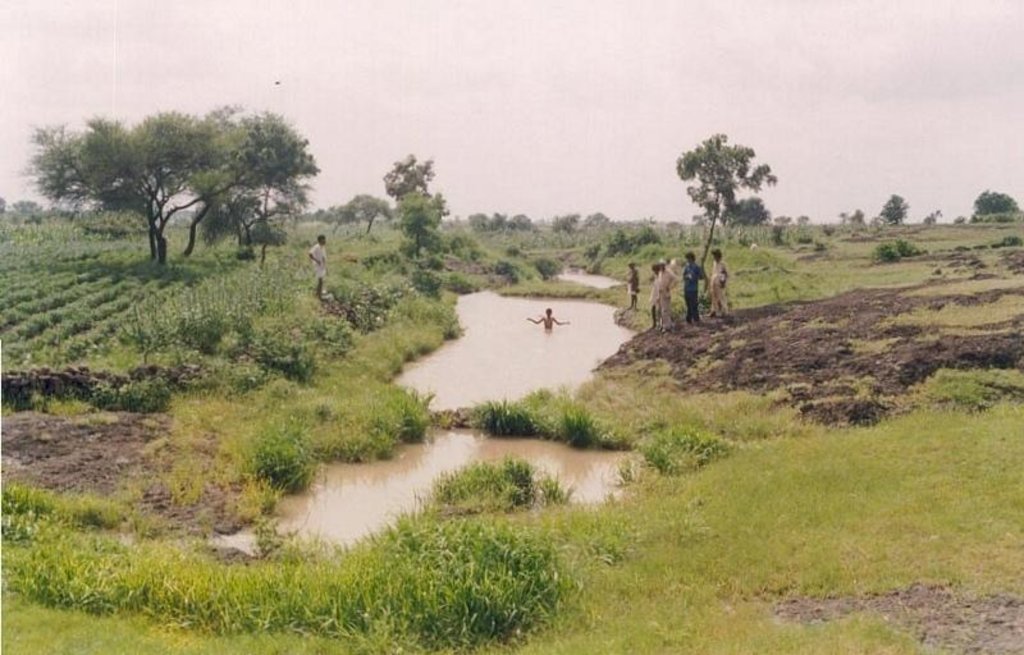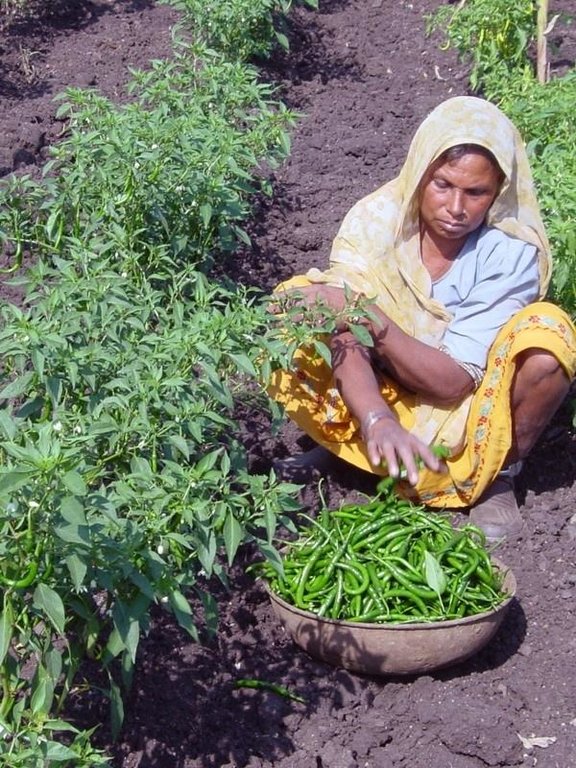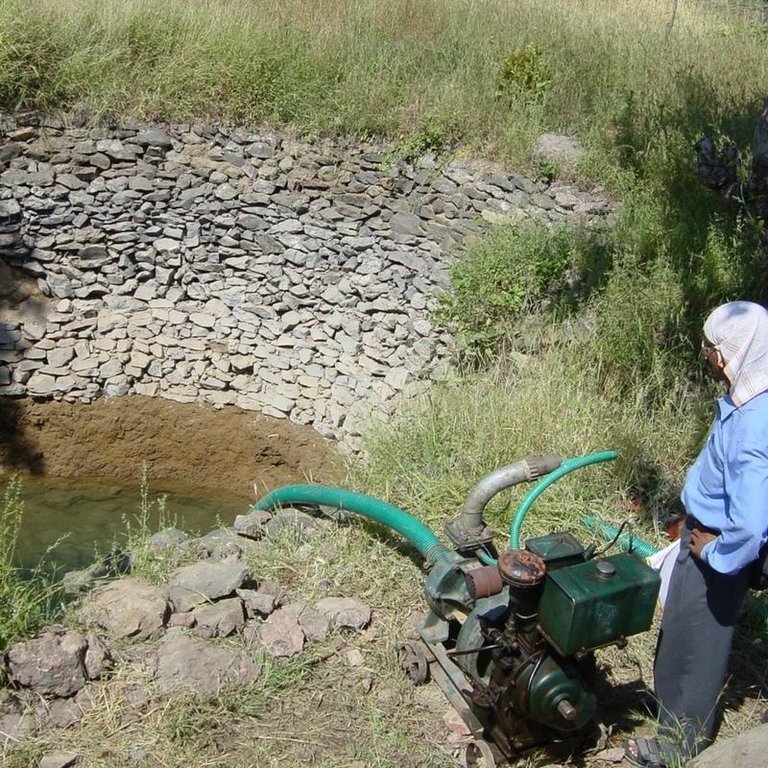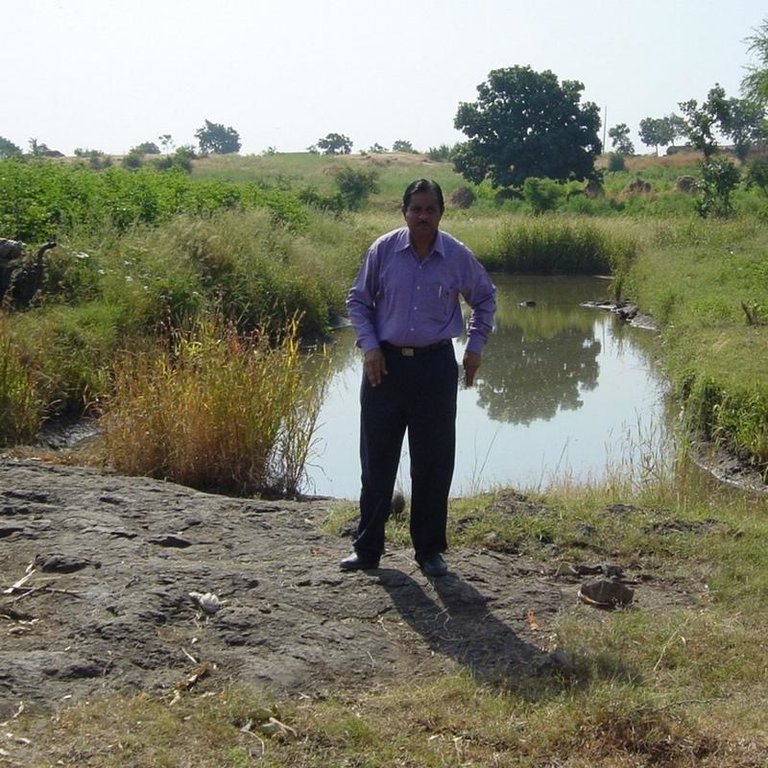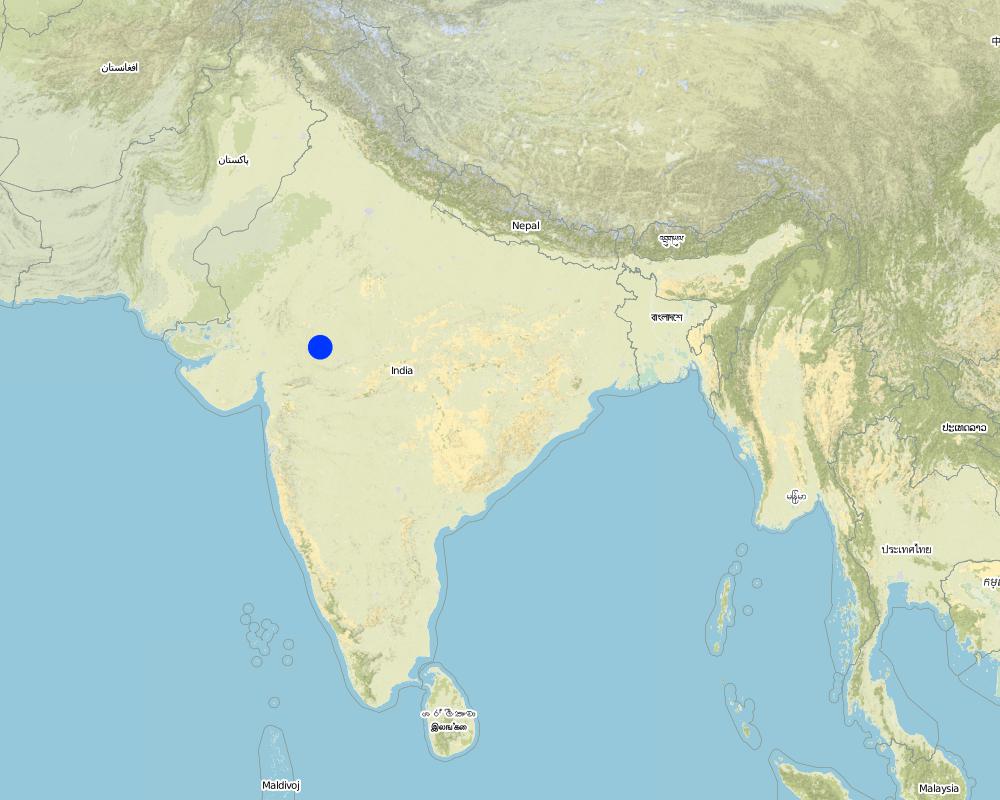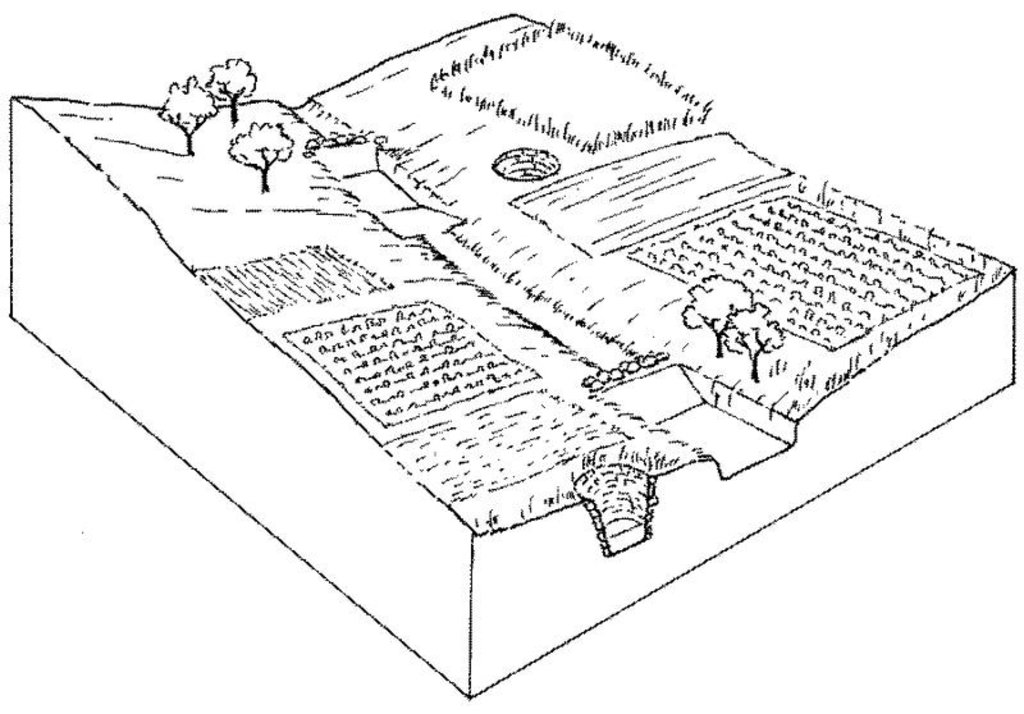Sunken streambed structure [Энэтхэг ]
- Шинийг нээх:
- Шинэчлэх:
- Мэдээлэл цуглуулсан: David Gandhi
- Редактор: –
- Хянагчид: Fabian Ottiger, Alexandra Gavilano
DOH
technologies_1471 - Энэтхэг
Бүлгүүдийг үзэх
Бүгдийг харуулах Бүгдийг хаах1. Ерөнхий мэдээлэл
1.2 Технологийг үнэлэх, баримтжуулах ажилд хамаарах мэдээлэл өгсөн хүмүүс, байгууллагуудын холбоо барих мэдээлэл
ГТМ мэргэжилтэн :
Agrawal VK
Comprehensive Watershed Development Project
Энэтхэг
ГТМ мэргэжилтэн :
Технологи баримтжуулах/үнэлэх ажилд дэмжлэг үзүүлсэн төслийн нэр (шаардлагатай бол)
Book project: Water Harvesting – Guidelines to Good Practice (Water Harvesting)Технологи баримтжуулах/үнэлэх ажилд дэмжлэг үзүүлсэн төслийн нэр (шаардлагатай бол)
Book project: where the land is greener - Case Studies and Analysis of Soil and Water Conservation Initiatives Worldwide (where the land is greener)1.3 WOCAT-аар баримтжуулсан өгөгдлийг ашиглахтай холбоотой нөхцөл
Эмхэтгэгч болон гол мэдээлэгч хүн(хүмүүс) WOCAT аргачлалаар баримтжуулсан мэдээллийг ашиглахтай холбоотой нөхцлийг хүлээн зөвшөөрсөн.
Тийм
1.5 ГТМ Арга барилын Асуулга (ууд) руу хандах (WOCAT ашиглан баримтжуулсан)
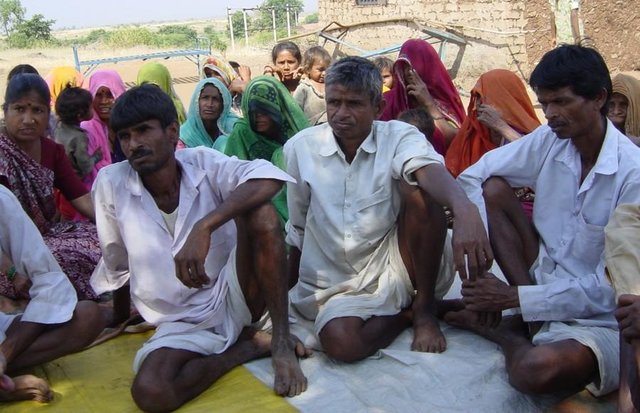
Comprehensive watershed development [Энэтхэг ]
Participatory approach that includes a package of measures leading to empowerment of communities to implement and sustain watershed development.
- Мэдээлэл цуглуулсан: David Gandhi
2. ГТМ Технологийн тодорхойлолт
2.1 Технологийн товч тодорхойлолт
Технологийн тодорхойлолт:
Excavations in streambeds to provide temporary storage of runoff, increasing water yields from shallow wells for supplementary irrigation.
2.2 Технологийн дэлгэрэнгүй тайлбар
Тодорхойлолт:
Dohs are rectangular excavations in seasonal streambeds, which are intended to capture and hold runoff to enhance groundwater recharge, thus increasing water for irrigation from nearby shallow wells. They also collect and impound subsurface flow. Dohs are built in semi-arid areas where rainfall is low and seasonal. The dimension of a typical doh is 1.0-1.5 m deep with variable length (up to 40 m) and width (up to 10 m) depending on streambed section, with an average capacity of 400 m3.
Purpose of the Technology: The excavated material is deposited along the stream banks as a barrier against siltation from surrounding areas. The slopes of the excavation are gentle (an upstream slope of 1:6 or 17% and a downstream slope of 1:8 or 12%) so that water flows into it, and excess water out again, carrying silt rather than depositing it. The sides however are steep, to increase capacity - and would benefit from stone pitching to stabilise them. A silt trap comprising a line of loose boulders is constructed upstream across the streambed. Dohs are generally built in sequence. They may be as close as a few metres apart. Bends in the stream are avoided as these are susceptible to bank erosion.
Establishment / maintenance activities and inputs: The technology is used in conjunction with shallow wells (odees), which enable farmers to harvest the increased groundwater for supplementary irrigation of annual crops- including vegetables such as chilli peppers. Water is pumped out of the wells. In the case study village, Mohanpada, each doh basically supplies an underground source of extra water to one well. Communities together with project staff carry out site selection, and then detailed design/estimates/layout is done with project technical assistance. As a supportive measure the catchment area is treated with gully plugs (small stone checks in gullies). A water harvesting tank (small reservoir or dam) may be excavated above the series of dohs where this is justified by a sufficiently large catchment area/suitable site. The capacity of the tank at Mohanpada is around 600 m3 and thus also has a positive impact on groundwater recharge.
Natural / human environment: Maintenance is agreed through meetings of user groups: manual desilting is planned and repairs of gully plugs also. In summary, dohs are low cost water recharge alternatives for poorer communities, and in this case study, the extra area brought under production has meant that all families that require it, now have access to some water for irrigation.
2.3 Технологийн гэрэл зураг
2.5 Энэ үнэлгээнд хамрагдсан технологийг хэрэгжүүлсэн улс орон / бүс нутаг / байршил
Улс :
Энэтхэг
Улс/аймаг/сум:
Madhya Pradesh
Байршлын дэлгэрэнгүй тодорхойлолт:
Ratlam, Mohanpada
Тайлбар:
Total area covered by the SLM Technology is 0.1 km2.
The project area for phase 1 comprises 18 villages (3314 Households) mainly tribal. A significant portion of the area is barren and used for open grazing. The sunken wter harvesting technology was initially demonstrated in few villages as an alternative to the high cost heading type approach to water harvesting bieng implemented on a large scale by main line programmes.
Map
×2.6 Хэрэгжих огноо
Байгуулсан тодорхой оныг мэдэхгүй бол баримжаа хугацааг тодорхойл:
- >50 жилийн өмнө (уламжлалт)
2.7 Технологийн танилцуулга
Технологийг хэрхэн нэвтрүүлснийг тодорхойл:
- Гадны төсөл/хөтөлбөрийн дэмжлэгтэйгээр
Тайлбар (төслийн төрөл г.м.):
The technology which is a modification of the traditional 'DOH' observed in river beds was implemented on an experimental basis in village Ambaohondan Tehsil 0 Mau, Dist. Indore under NWDPRA by Mr. V.K.Agrawal & Mr.V.V.Karmarkar.
3. ГТМ технологийн ангилал
3.1 Технологийн үндсэн зорилго (д)
- Үйлдвэрлэлийг сайжруулах
3.2 Технологи хэвтрүүлсэн газрын одоогийн газар ашиглалтын хэлбэр(д)
Нэг газр нутгийн хэмжээнд хэрэгжих холимог газар ашиглалт:
Тийм
Газар ашиглалтын холимог тогтолцоог (тарилан/бэлчээр/ой мод) тодорхойл:
- Агро-бэлчээр (тарилан-мал аж ахуйн хослуулсан тогтолцоог хамруулан ойлгоно)

Тариалангийн газар
- Нэг наст үр тариа
Тариалан - Таримлыг тодорхойлно уу:
- даавууны таримал - хөвөн
- буурцагт ургамал - вандуй
- хүнсний ногоо - бусад
- wheat, chili peppers
Нэг жил дэх ургамал ургах улирлын тоо:
- 2
Тодорхойлно уу:
Longest growing period in days: 120 Longest growing period from month to month: Jul - Oct

Бэлчээрийн газар
- Extensive grazing
Тайлбар:
Major land use problems (compiler’s opinion): There are regular poor yields of agricultural crops on the degraded, rainfed fields. A further constraint is the limited amount of water in wells, restricting both the extent of irrigation, and the number of people with access to irrigation. There is an underlying problem of poverty, which in turn leads to seasonal out-migration to find work.
Major land use problems (land users’ perception): Agricultural lands: sloping fields, soil loss, poor yields. Common lands:competition from surrounding villages for grazing resulting in low yields. Private pastures (bir): small patches which are not sufficient to meet the fodder needs. Settlement area: 28 huts already erected. Additional space not available.
Other grazingland: extensive grazing: on patches of waste lands within fields
Type of cropping system and major crops comments: During monsoon (kharif) season the main crop is cotton + maize. In addition minor pulses are taken. If water is available for irrigation, this is followed by wheat+gram in winter. Major area is fallow in winter except for the cotton crop which is of longer duration. No cultivation was observed in summer.
3.4 Усан хангамж
Технологи хэрэгжүүлсэн газрын усан хангамж:
- Байгалийн усалгаатай
Тайлбар:
Water supply: Also mixed rainfed - irrigated
3.5 Технологи ГТМ-ийн аль бүлэгт хамаарах
- Ус хураах
- Усжуулалтын менежмент (усан хангамж, ус зайлуулалт зэрэг.)
- Гадаргын усны менежмент (булаг шанд, гол, нуур, далай)
3.6 Технологийг бүрдүүлэх ГТМ арга хэмжээ

Барилга байгууламжийн арга хэмжээ
Тайлбар:
Main measures: structural measures
3.7 Технологийн шийдвэрлэсэн газрын доройтлын үндсэн төрлүүд

Хөрс усаар эвдрэх
- Wg: Гуу жалгын элэгдэл

Усны доройтол
- Ha: Хуурайшилт
Тайлбар:
Main type of degradation addressed: Wg: gully erosion / gullying, Ha: aridification
Main causes of degradation: other human induced causes (specify) (Social causes = Lack of awareness and mobilisation amongst the communities.), Top down approach (Macro planning rather than micro (village level) planning.)
3.8 Газрын доройтлоос урьдчилан сэргийлэх, сааруулах ба нөхөн сэргээх
Газрын доройтолтой холбоотойгоор Технологи ямар зорилго тавьсан болохыг тодорхойл:
- Газрын доройтлыг багасгах сааруулах
4. Техникийн нөхцөл, хэрэгжилтийн үйл ажиллагаа, материал ба зардал
4.1 Технологийн техникийн зураг
Техник тодорхойлолт (техник зурагтай уялдана):
Overview of sunken streambed structures (doh) with associated wells and irrigated plots. Note that several dohs are applied in series along the waterway.
Technical knowledge required for field staff / advisors: moderate
Technical knowledge required for land users: low
Main technical functions: increase of infiltration, water harvesting / increase water supply
Secondary technical functions: control of concentrated runoff: retain / trap
Structural measure: doh (sunken streambed structure)
Structural measure: dam, gully plugs (supp.)
Construction material (stone): used for silt trap on the upstream side
Construction material (other): weathered section is excavated manually, while hard rock beds may be excavated by machine, dynamite.
Зохиогч:
Mats Gurtner
4.2 Материал болон зардалд хамаарах ерөнхий мэдээлэл
бусад/үндэсний мөнгөн нэгж (тодорхойл):
Rupees
Хэрэв боломжтой бол үндэсний валютын Америк доллартай харьцах харьцааг бичнэ үү (тухайлбал, 1 ам.дол. = 79,9 Бразил реал): 1 ам.дол. =:
48.85
Хөлсний ажилчны нэг өрдийн ажлын хөлсийг тодорхойл:
1.00
4.3 Байгуулах үйл ажиллагаа
| Үйл ажиллагаа | Хугацаа (улирал) | |
|---|---|---|
| 1. | Site selection with community by eye | Dry season |
| 2. | Identification of beneficiaries and user groups | Dry season |
| 3. | Design & estimation by project staff | Dry season |
| 4. | Agreement of village committee. | Dry season |
| 5. | Treatment of catchment with gully plug | Dry season |
| 6. | Excavation of Dohs (200–400 m3) as last action with silt traps upstreamof each made from loose stone. | Dry season |
| 7. | Wells (odees) may be deepened and pumps bought | Dry season |
4.4 Байгуулалтад шаардагдах зардал ба материал
| Хөрөнгө оруулалтыг дурьдана уу | Хэмжих нэгж | Тоо хэмжээ | Нэгжийн өртөг | Материал бүрийн нийт өртөг | % газар ашиглачаас гарсан зардал | |
|---|---|---|---|---|---|---|
| Хөдөлмөр эрхлэлт | Labour | ha | 1.0 | 225.0 | 225.0 | 25.0 |
| Тоног төхөөрөмж | Tools | ha | 1.0 | 15.0 | 15.0 | 100.0 |
| Технологи бий болгох нийт үнэ өртөг | 240.0 | |||||
| Технологи бий болгох нийт үнэ өртөг, ам.доллар | 4.91 | |||||
Тайлбар:
Duration of establishment phase: 12 month(s)
4.5 Засвар үйлчилгээ / давтагдах үйл ажиллагаа
| Үйл ажиллагаа | Хугацаа/ давтамж | |
|---|---|---|
| 1. | Maintenance of catchment treatments (desilting of gully plugs etc) | Dry Season/if required |
| 2. | Meeting of User Group | Monsoon/After heavy Showars |
| 3. | Repairs to Silt-trap | During monsoon/After heavy shower |
| 4. | Desilting of DOH | Dry Season/annual |
4.6 Засвар үйлчилгээ / урсгал үйл ажиллагаанд шаардагдах зардал ба материал (жилээр)
| Хөрөнгө оруулалтыг дурьдана уу | Хэмжих нэгж | Тоо хэмжээ | Нэгжийн өртөг | Материал бүрийн нийт өртөг | % газар ашиглачаас гарсан зардал | |
|---|---|---|---|---|---|---|
| Хөдөлмөр эрхлэлт | Labour | ha | 1.0 | 5.0 | 5.0 | 100.0 |
| Технологийг арчилах тордоход шаардагдах нийт үнэ өртөг | 5.0 | |||||
| Технологи сайжруулах нийт үнэ өртөг, ам.доллар | 0.1 | |||||
Тайлбар:
The construction of one doh costs between US$ 200-400, depending on the size of the doh (approximately one cubic metre can be excavated per person day at a cost of one US dollar). On a per hectare basis the costs are very variable, since they are related to the extra area brought under irrigation. In this case study there are four dohs within a total village area of 50 ha. Ten of the 50 ha have been brought into irrigated production (extra to the 5 ha already irrigated) due to the four dohs and the ‘tank’ and the costs outlined above are spread over those 10 ha. In this case half of the costs are directly attributable to dohs (average capacity 400 m3 each), and half to catchment treatment where the water-harvesting tank (a reservoir of approximately 600 m3) is the main cost. Where there is underlying rock, mechanical drills and blasting by dynamite may be required, which increases the costs. That was not the case in this village. The cost of deepening/widening the five wells (odees) has not been included here: that is carried out by the villagers themselves. While the project normally pays around 85% of labour costs, here at Mohanpada village the project only needs to pay 75%, due to a high level of commitment by the villagers.
The total of 4 doh structure were constructed along a stream length of 451 m having gradient of 1.2%. Total storage capacity is 1646qm. It is observed that during past year (2002) the structures were completely filled & subsequently emptied (percolated) 5 times.
4.7 Зардалд нөлөөлж байгаа хамгийн чухал хүчин зүйл
Өртөг зардлыг тодорхойлох гол хүчин зүйлсийг дурьдана уу:
Presence of hard stata (bed rock) increases cost of excavation
5. Хүн, байгалийн хүрээлэн буй орчин
5.1 Уур амьсгал
Жилийн нийлбэр хур тундас
- <250 мм
- 251-500 мм
- 501-750 мм
- 751-1,000 мм
- 1,001-1,500 мм
- 1,501-2,000 мм
- 2,001-3,000 мм
- 3,001-4,000 мм
- > 4,000 мм
Жилийн дундаж хур тунадас (хэрэв мэдэгдэж байвал), мм:
800.00
Хур тунадасны талаархи тодорхойлолт/ тайлбар:
However since past 4 years rainfall has been below average
Агро-уур амьсгалын бүс
- Хагас хуурай
Located on the tropic of cancer, characterised by hot dry summers (max 46 deg C) and cold dry winters. Monsoon (July-Sept) is characterised by high intensity showers followed by prolonged dry spells.
5.2 Байрзүйн зураг
Дундаж налуу:
- Тэгш (0-2 %)
- Бага зэрэг хэвгий (3-5 %)
- Дунд зэрэг хэвгий (6-10 % )
- Долгиорхог (11-15 %)
- Толгодорхог (16-30 %)
- Эгц налуу (31-60 % )
- Огцом эгц налуу (>60 %)
Гадаргын хэлбэр:
- Тэгш өндөрлөг/тэгш тал
- Зоо, хяр
- Уулын энгэр, хажуу
- Ухаа, гүвээ, дов толгод
- Уулын бэл
- Хөндий, хоолой, нам хотос
Өндөршлийн бүс:
- 0-100 м д.т.д
- 101-500 м д.т.д
- 501-1,000 м д.т.д
- 1,001-1,500 м д.т.д
- 1,501-2,000 м д.т.д
- 2,001-2,500 м д.т.д
- 2,501-3,000 м д.т.д
- 3,001-4,000 м д.т.д
- > 4,000 м д.т.д
Гадаргын талаархи тайлбар ба бусад тодорхойлолт:
Slopes on average: Also gentle (ranked 2) and moderate (ranked 3)
5.3 Хөрс
Хөрсний дундаж зузаан:
- Маш нимгэн (0-20 см)
- Нимгэн (21-50 см)
- Дунд зэрэг зузаан (51-80 см)
- Зузаан (81-120 cм)
- Маш зузаан (>120 cм)
Хөрсний бүтэц (өнгөн хөрс):
- Сийрэг/хөнгөн (элсэрхэг)
- Дунд зэрэг (шавранцар)
Өнгөн хөрсний органик нэгдэл:
- Их (>3 %)
- Дунд (1-3 % )
Боломжтой бол хөрсний бүрэн тодорхойлолт, боломжит мэдээллийг өгнө үү, жишээ нь хөрсний төрөл, хөрсний урвалын орчин/хүчиллэг байдал, катион солилцох чадавхи, азотын хэмжээ, давсжилт г.м.
Soil depth on average: Very shallow (ranked 1, eroded wastelands, fields on slopes) and shallow (ranked 2, fields in valley portion)
Soil texture: Medium (ranked 1, present in valley sections) and coarse/light (ranked 2, present along slopes)
Soil fertility: Low (ranked 1, fields along slopes,waste lands) and medium (ranked 2, fields in valley section)
Topsoil organic matter: High (ranked 1, fields along slopes, waste lands) and medium (ranked 2, fields in valley sections)
Soil drainage/infiltration: Medium
Soil water storage capacity: Low
5.6 Технологи нэвтрүүлсэн газар ашиглагчидын онцлог шинж
Үйлдвэрлэлийн системийн зах зээлийн чиг баримжаа:
- холимог (амьжиргаа ба худалдаанд)
Фермээс гадуурх орлого:
- Нийт орлогын % 10-50 хувь
Чинээлэг байдлыг харьцангуй түвшин:
- Нэн ядуу
- Ядуу
Механикжилтын түвшин:
- Хүнд хүчир ажил
- Амьтны зүтгүүр
Газар ашиглагчдын бусад шаардлагатай шинж чанарыг тодорхойл:
Population density: > 500 persons/km2
Annual population growth: > 4%
1% of the land users are average wealthy (One family has bore-well).
19% of the land users are poor (Few farmers have access to shallow wells.).
80% of the land users are poor (Majority are small/marginal farmers without access to irrigation).
Off-farm income specification: some migratory work in nearby towns and in large scale mechanised farms during peak periods (note: now there is less migration as a result of increased irrigation)
5.7 Технологи нэвтрүүлэхэд газар ашиглагчийн ашигласан газрын дундаж талбай
- < 0.5 га
- 0.5-1 га
- 1-2 га
- 2-5 га
- 5-15 га
- 15-50 га
- 50-100 га
- 100-500 га
- 500-1,000 га
- 1,000-10,000 га
- > 10,000 га
5.8 Газар эзэмшил, газар ашиглах эрх, ус ашиглах эрх
Газар өмчлөл:
- Нэгдэл/ тосгон
- Хувь хүн, цол эргэм бүхий
Газар ашиглах эрх:
- Нээлттэй хүртэх (зохион байгуулалтгүй)
- Хувь хүн
6. Үр нөлөө ба дүгнэлт
6.1 Технологийн талбай дахь үр нөлөө
Нийгэм-эдийн засгийн үр нөлөө
Үйлдвэрлэл
Газар тариалангийн үйлдвэрлэл
Орлого, зарлага
тариалангийн газрын орлого
эдийн засгийн ялгаа
Тайлбар/ тодорхой дурьдах:
Increased economic inequity in some villages, between those with wells and those without
Нийгэм-соёлын үр нөлөө
олон нийтийн институц
ГТМ/ газрын доройтлын талаархи мэдлэг
маргааныг шийдвэрлэх
Тайлбар/ тодорхой дурьдах:
Increased economic inequity in some villages, between those with wells and those without
Экологийн үр нөлөө
Усны эргэлт/ илүүдэл
гүний усны түвшин / уст давхарга
Хөрс
хөрсний чийг
хөрсөн бүрхэвч
Тайлбар/ тодорхой дурьдах:
Where cultivated
хөрс алдагдах
Тайлбар/ тодорхой дурьдах:
In catchment
6.2 Технологийн талбайн гадна үзүүлсэн үр нөлөө
хуурай улиралд ашиглах найдвартай, тогтвортой урсгал
Доод урсгалын үер
урсацын адагт лаг шавар хуримтлагдана
газар доорхи ус/голын усны бохирдол
Amount of water to downstream users
6.4 Зардал ба үр ашгийн шинжилгээ
Үр ашгийг барилга байгууламжийн зардалтай (газар ашиглагчдын үзэл бодлоор) хэрхэн харьцуулах вэ?
Богино хугацаанд эргэн төлөгдөх байдал:
Эерэг
Урт хугацаанд эргэн төлөгдөх байдал:
Маш эерэг
Үр ашгийг засвар үйлчилгээ/ урсгал зардалтай (газар ашиглагчдын үзэл бодлоор) хэрхэн харьцуулах вэ?
Богино хугацаанд эргэн төлөгдөх байдал:
Эерэг
Урт хугацаанд эргэн төлөгдөх байдал:
Маш эерэг
6.5 Технологи нутагшуулах
Тайлбар:
100% of land user families have adopted the Technology with external material support
1600 land user families have adopted the Technology with external material support
Comments on acceptance with external material support: estimates
There is a little trend towards spontaneous adoption of the Technology
Comments on adoption trend: Farmers in Mohanpada have constructed one doh with only 10 % subsidy on the total cost.
Spontaneous adoption is growing in neighbouring villages.
6.7 Технологийн давуу тал/боломжууд
| Эмхэтгэгч, бусад мэдээлэл өгсөн хүмүүсийн өнцгөөс тодорхойлсон давуу тал/боломжууд |
|---|
|
Dohs are a low cost alternative method of increasing groundwater in a semi-arid area where production of high value legumes depends on irrigation – and dohs represent the best way in this situation of expanding the extent of irrigated land, and bringing irrigation to more families. |
|
Small, multiple recharge points for replenishing groundwater for irrigation from wells How can they be sustained / enhanced? Breaking hard pan in stream bed mechanically by drills or blasting to deepen dohs and thereby make them more effective. |
| No risk of breaches of bunds as the structures are sunken below ground. |
6.8 Технологийн дутагдалтай/сул тал/аюул болон тэдгээрийн хэрхэн даван туулах арга замууд
| Эмхэтгэгч, бусад мэдээлэл өгсөн хүмүүсийн өнцгөөс тодорхойлсон сул тал/ дутагдал/ эрсдэл | Тэдгээрийг хэрхэн даван туулах вэ? |
|---|---|
| Group maintenance is required | Form user groups. |
| Villagers are more used to (and may prefer) larger and deeper ‘tanks’ | Establish more dohs to create more impact. |
| Dohs are limited in capacity and thus dry up quickly, as do the wells | Establish more dohs to create more impact. |
7. Ном зүй ба холбоосууд
7.1 Мэдээллийн аргууд / эх сурвалжууд
Холбоос ба модулууд
Бүгдийг харуулах Бүгдийг хаахХолбоосууд

Comprehensive watershed development [Энэтхэг ]
Participatory approach that includes a package of measures leading to empowerment of communities to implement and sustain watershed development.
- Мэдээлэл цуглуулсан: David Gandhi
Модулууд
Модуль байхгүй байна


